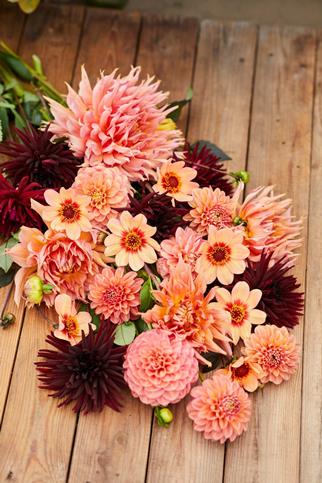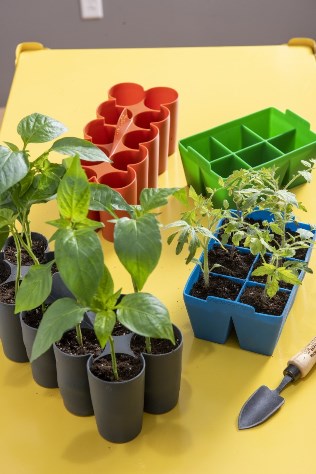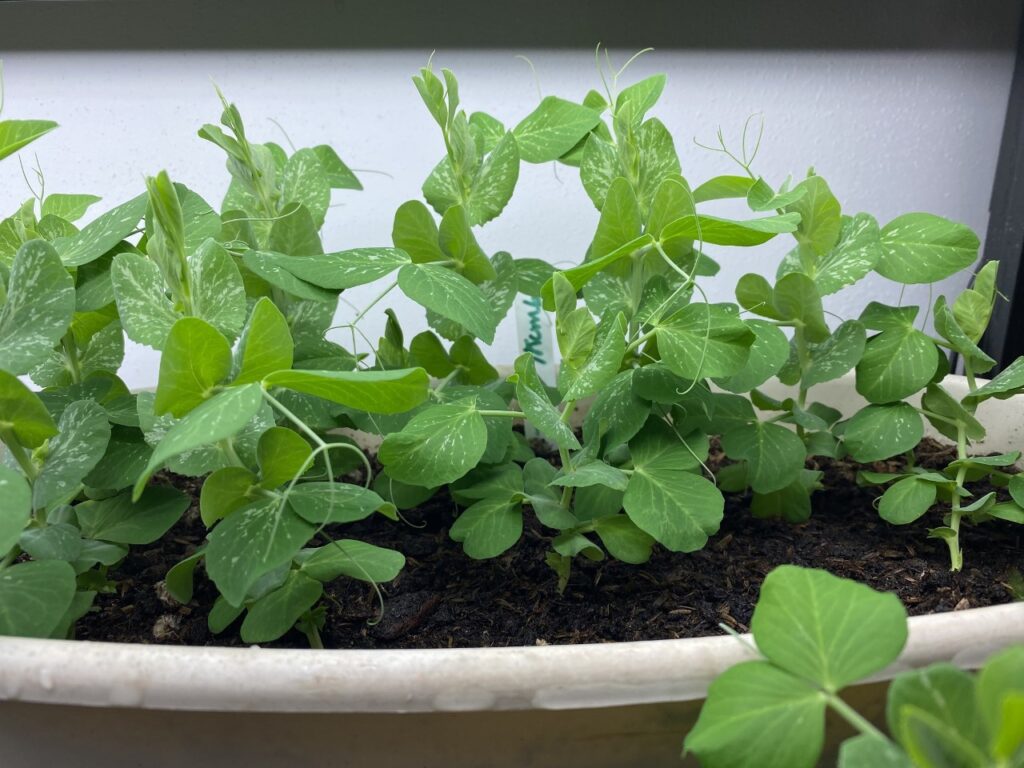
Gardening
by Melinda Myers
Growing dahlias is a must for anyone who loves cutting and arranging flowers. But there are hundreds of beautiful dahlia varieties to choose from and that can be overwhelming. To make the selection process easier, choose compatible colors that will look good together in the garden and in arrangements.
The combination of peach and burgundy is both striking and sophisticated. Peach-colored flowers add a fresh and soothing feel to the garden. Dahlia American Dawn is a blend of peach, mango, and papaya with plum-purple highlights. Good partners include other varieties in the same warm, sunset tones, such as dinnerplate dahlia Belle of Barmera, decorative dahlia Great Silence and ball dahlia Maarn.
Planting dahlias in a perennial garden ensures non-stop color from July into October. The fluttering, melon-colored blooms of HS Date work particularly well, due to this variety’s maroon foliage and open growth habit. Complete your peach and burgundy theme with the dark-hued flowers of Rip City. These large, velvety flowers are almost black in the center and soften to wine-red toward the petal edges. Add ball dahlia Jowey Mirella for blooms that are smaller in size yet equally striking.
For another eye-catching color combination, narrow your selection to dahlias with purple and hot-pink flowers. Historically, purple was associated with royalty, spirituality, and knowledge. While pastel purple evokes a sense of calm and serenity, deeper tones add drama and excitement. Dinnerplate dahlia Lilac Time is an heirloom variety with fluffy, lavender blooms that can measure eight to ten inches across. Be sure to also include flowers in juicy grape and violet hues such as dahlias Thomas Edison, Cartouche and Purple Taiheijo.
Complement these moody purples with vivid pink dahlias. Burlesca is a cute little pompon dahlia with tightly rolled petals that reveal hints of peach, burgundy and violet. Fascination’s rose-pink, semi-double flowers contrast beautifully with the plant’s dark foliage and the blossoms are irresistible to bees and butterflies. Ball dahlia Rocco is an all-star variety that is long lasting in both garden and vase.
If you prefer pastels to brights, choose dahlias in shades of pale yellow, soft pink and cream. The enormous flowers of dinnerplate dahlia Café au Lait are a must. Complement them with ball dahlias such as peachy Linda’s Baby or buttery Boom Boom yellow. Decorative dahlia Fluffles has taffy-pink petals that fade to white, while Milena Fleur’s are a mélange of pink, peach and pale butterscotch.
When you start with flowers in compatible colors, designing floral arrangements becomes so much easier. You’ll have all you need to quickly create a centerpiece for any gathering, an impressive bouquet for your own home, or an informal handful of blooms to share with friends.
For more tips about cut flowers, read the Longfield Gardens article How to Design a Cutting Garden (www.longfield-gardens.com).
Melinda Myers is the author of more than 20 gardening books, including Small Space Gardening. She hosts The Great Courses “How to Grow Anything” DVD series and the Melinda’s Garden Moment TV & radio program. Myers is a columnist and contributing editor for Birds & Blooms magazine and was commissioned by Longfield Gardens for her expertise to write this article. Her web site is www.MelindaMyers.com.


